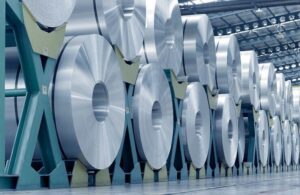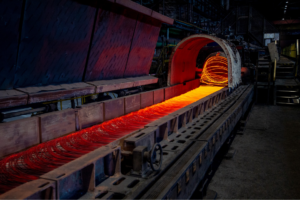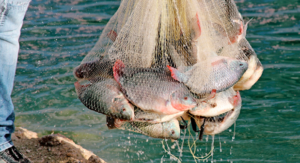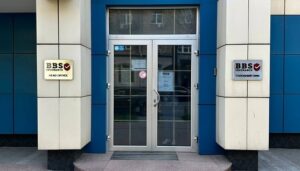
According to the results of 2024, Ukraine increased its apparent steel use in crude steel equivalent by 10.9% compared to 2023, from 3.987 million tons to 4.423 million tons.
According to the annual compilation published by Worldsteel, Ukraine increased its apparent steel consumption in finished product equivalent by 5.6% compared to 2023, to 3.633 million tons from 3.439 million tons.
At the same time, Ukraine produced 7.575 million tons of steel in 2024 (6.228 million tons in 2023), and last year’s pig iron production amounted to 7.090 million tons (6.003 million tons), of which 1.235 million tons (1.248 million tons) were exported.
At the same time, steel consumption per capita reached 117 kg (106 kg/person in 2023).
On average, global apparent steel consumption (in crude steel equivalent) per capita last year was 228 kg (in 2023 – 234 kg/capita), and finished products – 96 (91) (kg/capita). At the same time, the world consumed 1 billion 750.004 million tons of steel in 2024 and 1 billion 777.949 million tons in 2023.
Last year, Ukraine mined 50.584 million tons of iron ore (in 2023 – 27.048 million tons) and exported 35.695 million tons (17.749 million tons). Scrap metal exports amounted to 288,000 tons (182,000 tons).
In 2024, Ukraine exported 511,000 tons of pipe products, in 2023 – 356,000 tons, and imported 105,000 tons (111,000 tons).
For more information on the largest steel producers and global industry trends, see the Experts Club video analysis review available on YouTube: Experts Club — Leaders of the global steel industry 1990–2024

The Kametstal plant, part of the Metinvest mining and metallurgical group (Kamensk, Dnipropetrovsk region), has completed the reconstruction of continuous casting machine No. 1 in the converter shop as part of its 2025 investment program.
According to the company, following the successful completion of the second stage of the investment project, key equipment of the machine’s pulling and straightening devices has been upgraded.
It is specified that new motor reducers for the pulling and straightening device were installed on each of the seven streams of the CCMC-1, on which thermal shielding was also performed.
“In this way, steelmakers have solved the urgent issue of extending the service life of motor reducers, which ensure the stable movement of the pulling and straightening devices. Previously, this equipment failed prematurely due to the destructive effects of high temperatures,” the report states.
Encoders were also installed and put into operation on all upper motors of the gear motors. These devices, thanks to feedback in control, make it possible to control and stabilize the speed of the continuously cast billet and, thus, increase the accuracy of its cutting.
The second stage of the reconstruction of the No. 1 continuous casting machine was carried out without additional machine stoppages, given the need to fulfill orders for commercial steel products, particularly those of higher quality, for domestic and European customers. Each stream was technically prepared in advance for the replacement of equipment, and during the technological stoppage, updates were carried out in pit stop mode.
As a result of the second stage of reconstruction, metallurgists received a number of technical and economic advantages: several times longer service life of the motor reducers of the stoves; maximum precision of cutting the billets, which made it possible to reduce metal consumption. In addition, the technical solutions implemented optimized the operation of the pulling and straightening device to reduce electricity consumption on the upper and lower motor reducers by 1.2 kW*hour while maintaining stable casting on the machine.
Kametstal is part of the Metinvest Group.

IC “BBS Insurance” (former IC ‘Brokbusiness’, Kiev) has collected UAH 660,03 m of gross premiums in January-September 2025, that is by 64,70% more than in the same period of 2024, RA “Expert Rating” informed in the information on confirmation of IC financial strength rating at the level “uaAA” according to the national scale.
According to RA data, the share of insurance premiums owned by reinsurers has grown by 44,6%, and their share in the structure of gross premiums of the company has decreased by 0,23 p.p. and has amounted to 1,63%.
In the first nine months of 2025, the company made 77.75% more insurance payments and indemnities than in the first nine months of 2024, and the level of payments increased by 2.62 p.p. to 35.67%. – up to 35,67%.
During the reporting period shareholders’ equity of IC “BBS Insurance” has grown by 21,21% – up to UAH 196,84 mln, and its gross liabilities have increased by 61,05% and have amounted to UAH 388,29 mln. As a result of high rates of liabilities growth there has been a decrease in the level of shareholders’ equity coverage of insurer liabilities in the analyzed period: by 16,67 p.p. to 50,69%. – to 50,69%.
The volume of cash and cash equivalents has grown by 58,62% and has amounted to UAH 382,28 mln, and the ratio between cash and liabilities of the insurer has decreased by 1,51 p.p. to 98,45%. – to 98,45%. Thus, as of the beginning of Q4 2025, highly liquid assets have covered company liabilities by 98,45%.
RA also notes that in the analyzed period the activity of the company was profitable, so compared to the same period of 2024 the operating profit grew by 38,51% and amounted to UAH 49,05 mln, and net profit increased by 27,13% to UAH 47,63 mln.
IC “BBS Insurance” has been working in the Ukrainian insurance market for more than 30 years and is represented in all regions of the country. It has a license for insurance activity in 18 classes.

As of December 5, farmers have harvested 53.597 million tons of grain and legumes from 10.55 million hectares, which is 91% of the area sown with these crops, according to the Ministry of Economy, Environment, and Agriculture.
According to the Ministry of Economy, 23.5 million tons of corn have been harvested from 3.44 million hectares. As for wheat, its yield is slightly higher than a year ago – 22.96 million tons from 5.05 million hectares compared to 22.40 million tons from 4.9 million hectares, while barley is slightly lower – 5.42 million tons from 1.36 million hectares compared to last year’s 5.6 million tons from 1.41 million hectares.
This year’s pea harvest is significantly higher – 672,500 tons from 275,100 hectares compared to 469,000 tons from 212,300 hectares a year ago, while buckwheat and millet are still significantly lower – 82.7 thousand tons compared to 131.7 thousand tons and 62.1 thousand tons compared to 161.3 thousand tons, respectively.
The harvest of other cereals and legumes this year reached 899.6 thousand tons from 327.8 thousand hectares as of December 5, compared to 1 million tons a year ago.
The Ministry of Economy has calculated that the corn harvest has been gathered from 78% of the production areas allocated for this crop, millet – from 88%, buckwheat – from 97%, wheat and barley – from 98%.
As for oilseeds, their harvest as of December 5 is 17.11 million tons. In general, sunflower has been harvested from 93% of the sown areas, and soybeans from 97%. The rapeseed harvest has been completed, and it turned out to be only slightly less than last year’s – 3.31 million tons against 3.5 million tons from almost identical areas – about 1.3 million hectares.
Currently, 4.75 million tons of soybeans have been harvested from 2.00 million hectares, while 9.04 million tons of sunflower seeds have been harvested from 4.81 million hectares.
In addition, the harvest of sugar beets is also lagging behind: 98% of the production area has been harvested, yielding 10.39 million tons from 195,000 hectares.
In its October inflation report, the National Bank of Ukraine increased its estimate of the grain and legume harvest in 2025 to 61.5 million tons from 57.9 million tons in the July report, while lowering its estimate of the oilseed harvest to 19.3 million tons from 21.0 million tons.
The NBU recalled that last year, the grain harvest in Ukraine fell to 56.2 million tons from 59.8 million tons in 2023, and oilseeds from 21.7 million tons to 20 million tons.

Auctions for the right to special use of aquatic biological resources in fishery water bodies (or parts thereof) in 2026 will be held on December 8 in the Prozorro.Prozori state electronic trading system, according to the State Agency for Fisheries.
“This will allow entrepreneurs to prepare their material and technical base in advance and plan their economic activities,” the agency noted.
A total of 246 lots will be put up for auction for industrial fishing in 2026, namely: Kremenchuk Reservoir – 59 lots, Dnipro-Buzka Estuary System – 35 lots, Kamyanske Reservoir – 32 lots, Kaniv Reservoir – 27 lots, the lower reaches of the Dniester River (with lakes, the Turunchuk branch) and the Dniester Estuary – 17 lots, the Danube River – 16 lots, Kyiv Reservoir – 15 lots, Dnipro Reservoir – 11 lots, Tiligul Estuary – 10 lots, Berezan Estuary – 8 lots, Dnipro River within Chernihiv Oblast – 8 lots, Desna River with lakes within Chernihiv Oblast – 8 lots.
The State Agency for Fisheries invited business entities that plan to engage in commercial fishing and have declared their right to do so by submitting a corresponding electronic declaration to participate in the auction.
“This is your opportunity to legally, transparently, and honestly obtain the right to industrial fishing, contributing to the food security of the state,” the agency emphasized, adding that detailed information about the lots, auction dates, starting prices, guarantee deposit amounts, volumes and types of aquatic biological resources, fishing gear, etc. can be found on the State Agency for Fisheries’ information resources and in the state system “Prozorro.Sales.”

Insurance company BBS Insurance (formerly Brokbusiness, Kyiv) collected UAH 660.03 million in gross premiums in January-September 2025, which is 64.70% more than in the same period of 2024.
This was reported by RA Expert-Rating in its confirmation of the insurance company’s financial stability rating at “uaAA” on the national scale.
According to the RA, the share of insurance premiums belonging to reinsurers increased by 44.6%, while their share in the company’s gross premium structure decreased by 0.23 p.p. to 1.63%.
In the first nine months of 2025, the company made 77.75% more insurance payments and reimbursements than in the first nine months of 2024, and the level of payments increased by 2.62 p.p. to 35.67%.
During the reporting period, the equity capital of IC “BBS Insurance” increased by 21.21% to UAH 196.84 million, while its gross liabilities increased by 61.05% to UAH 388.29 million. As a result of the higher growth rate of liabilities, the level of coverage of the insurer’s liabilities by equity capital decreased in the reporting period: by 16.67 p.p. to 50.69%.
Cash and cash equivalents increased by 58.62% to UAH 382.28 million, while the ratio of cash to liabilities decreased by 1.51 p.p. to 98.45%. Thus, as of the beginning of the fourth quarter of 2025, highly liquid assets covered 98.45% of the company’s liabilities.
RA also notes that the company’s activities were profitable during the period under review. Compared to the same period in 2024, operating profit increased by 38.51% to UAH 49.05 million, and net profit increased by 27.13% to UAH 47.63 million.
BBS Insurance has been operating in the Ukrainian insurance market for over 30 years and is represented in all regions of the country. It has a license to conduct insurance activities in 18 classes.